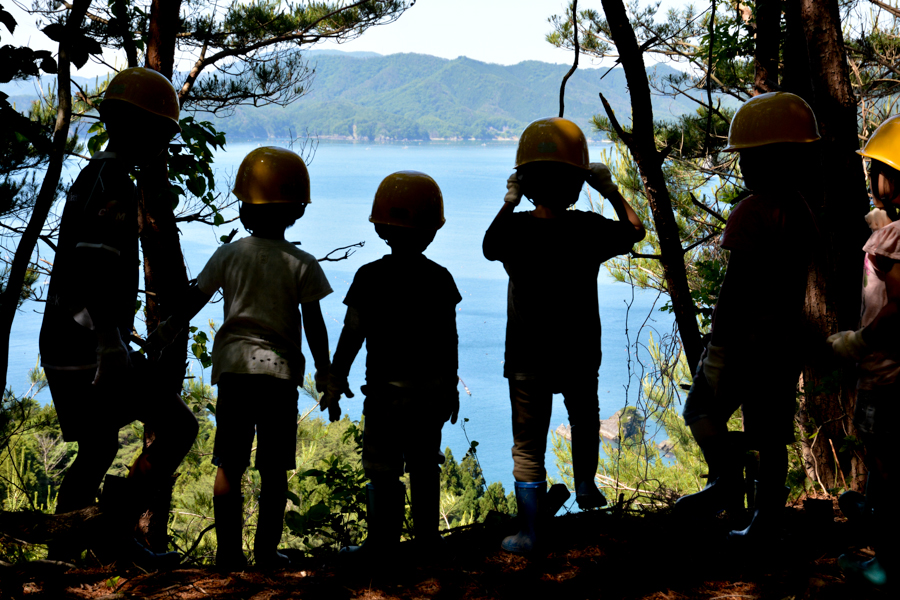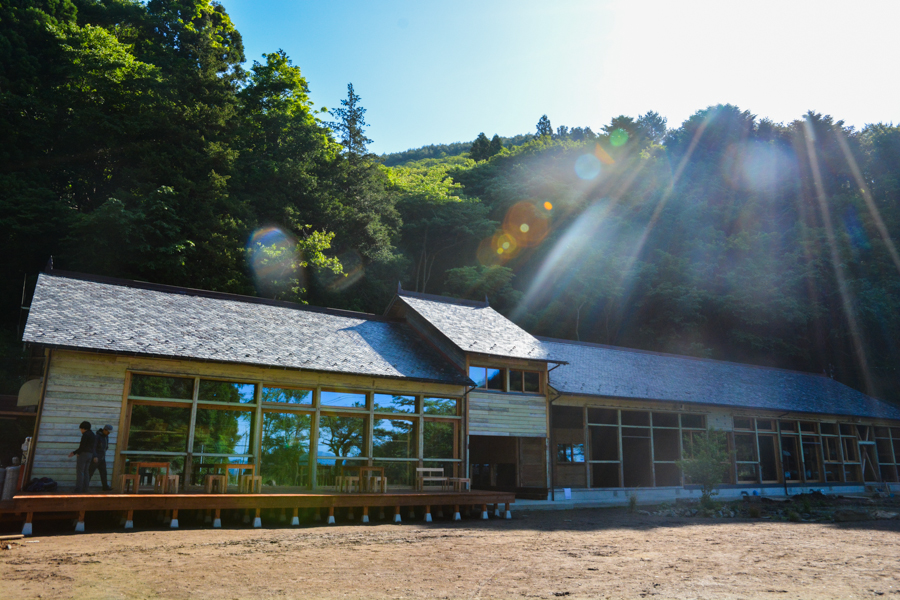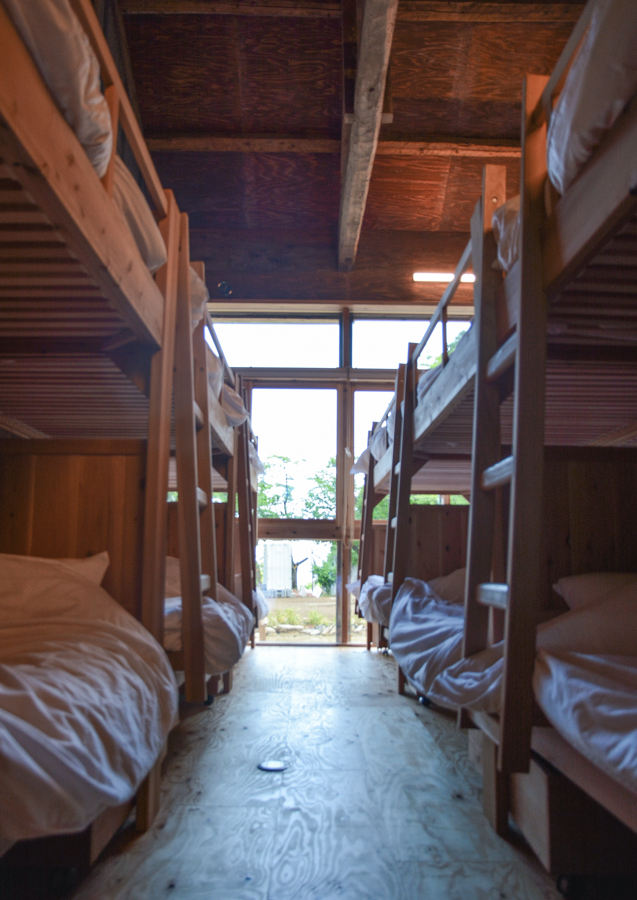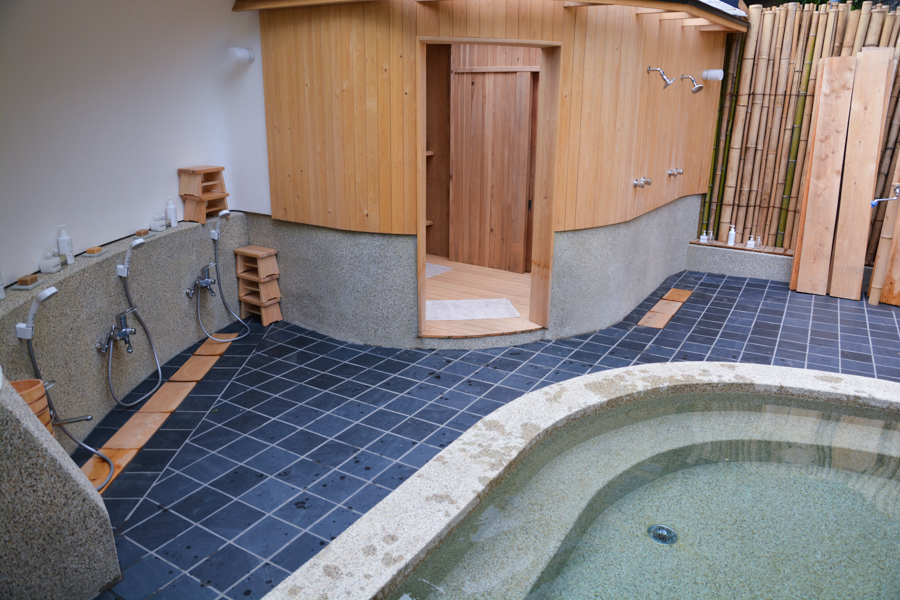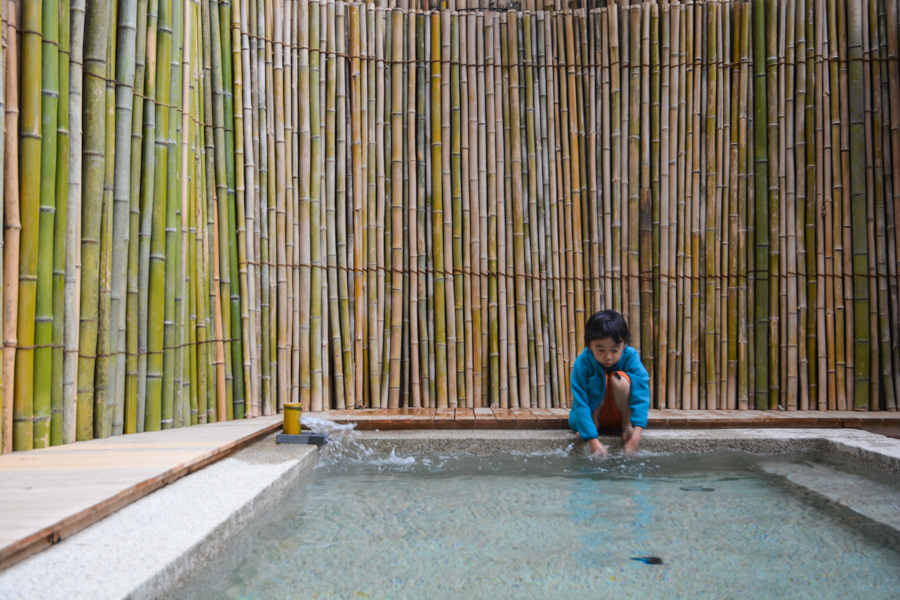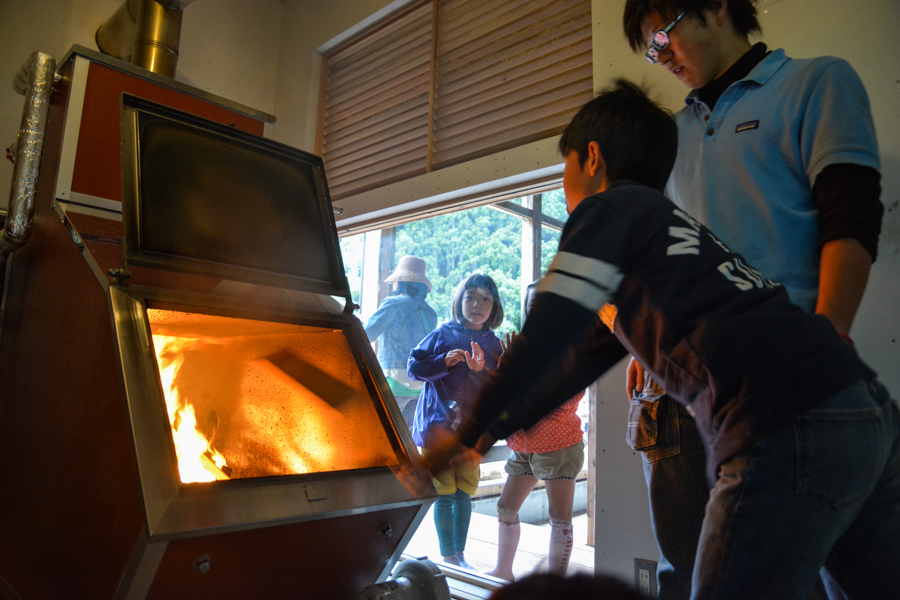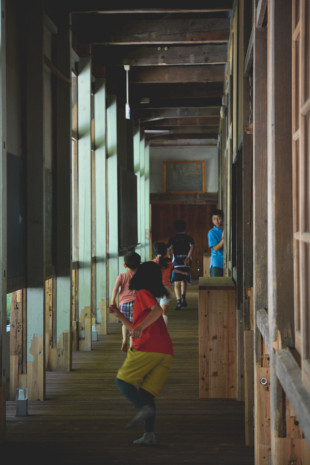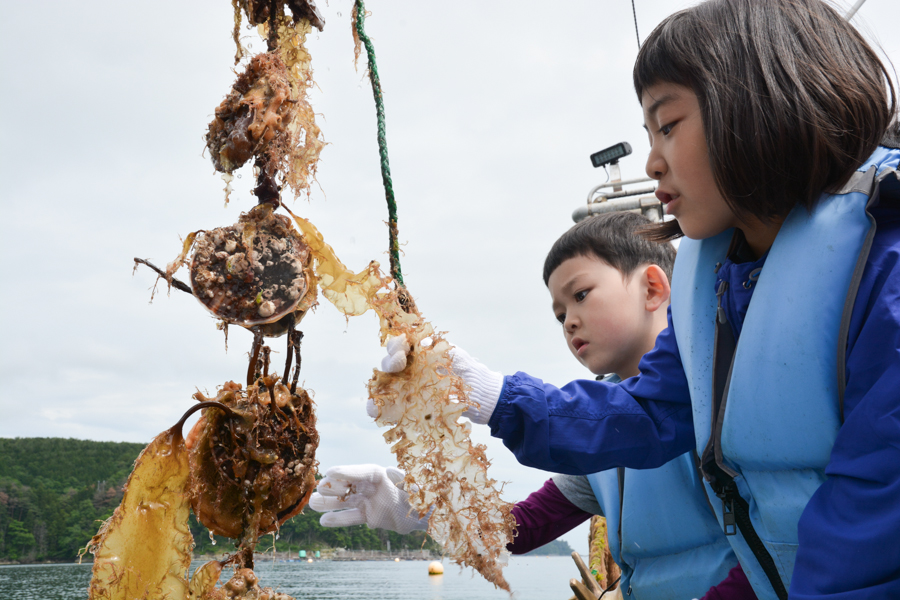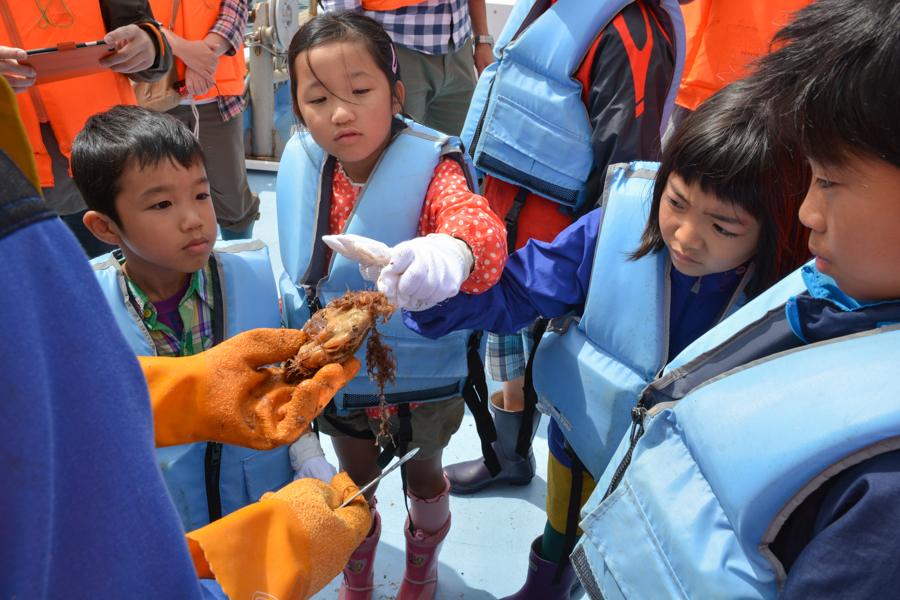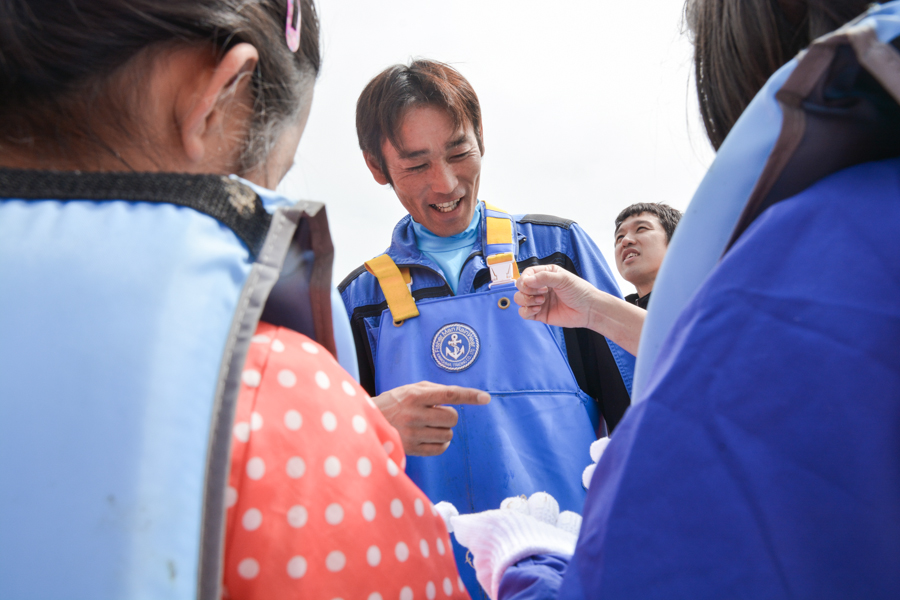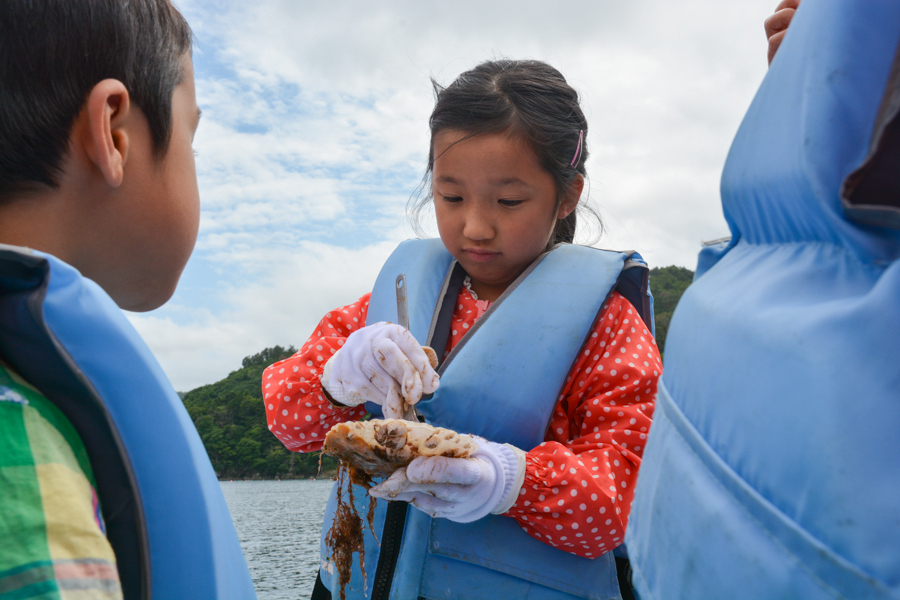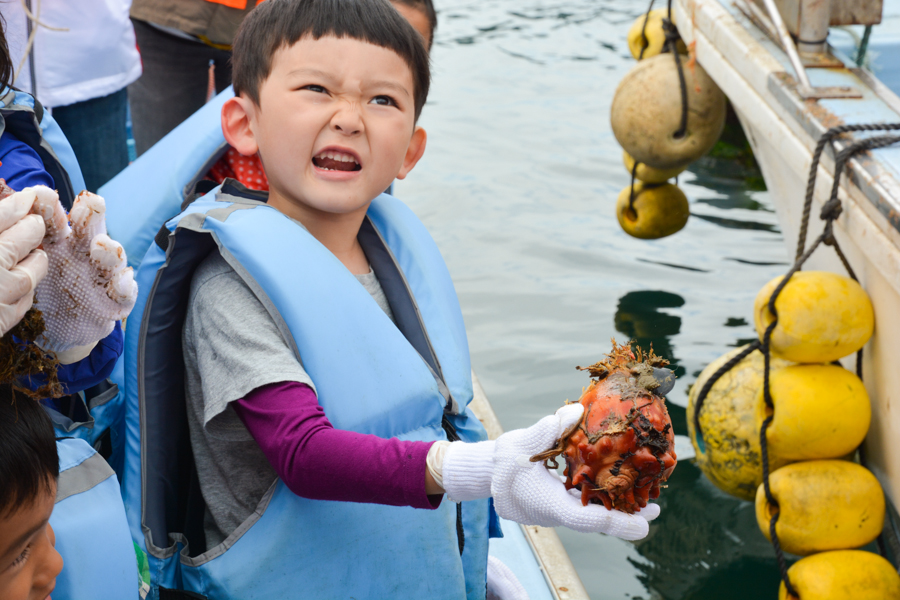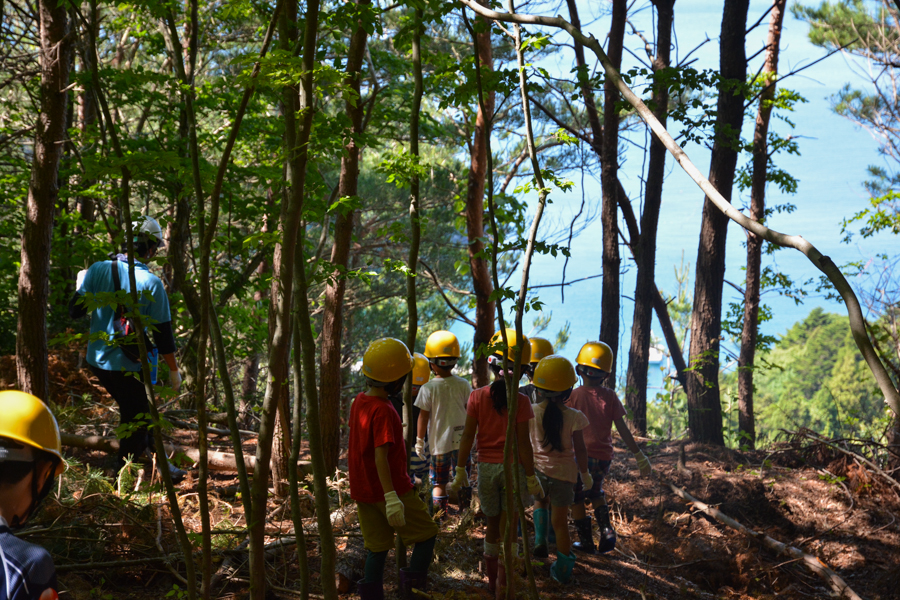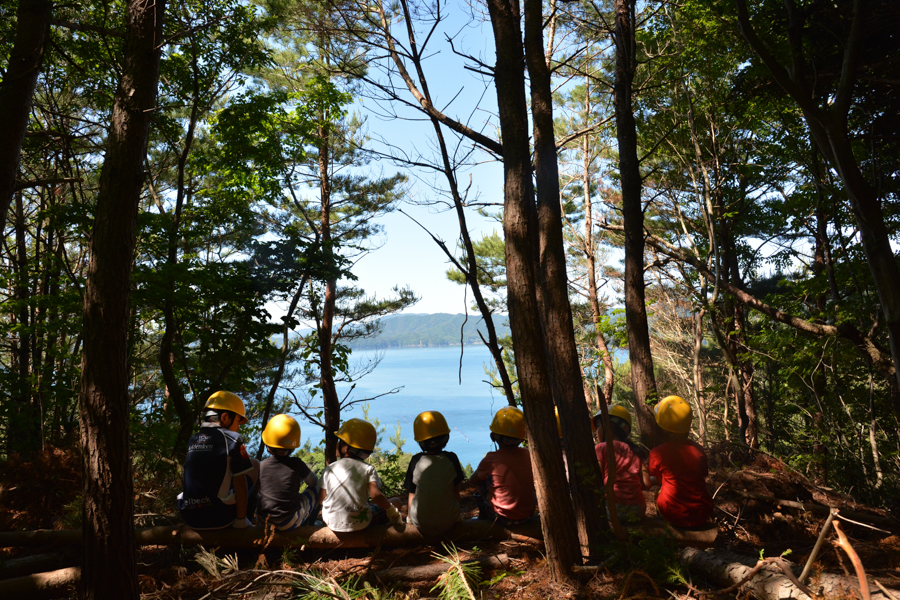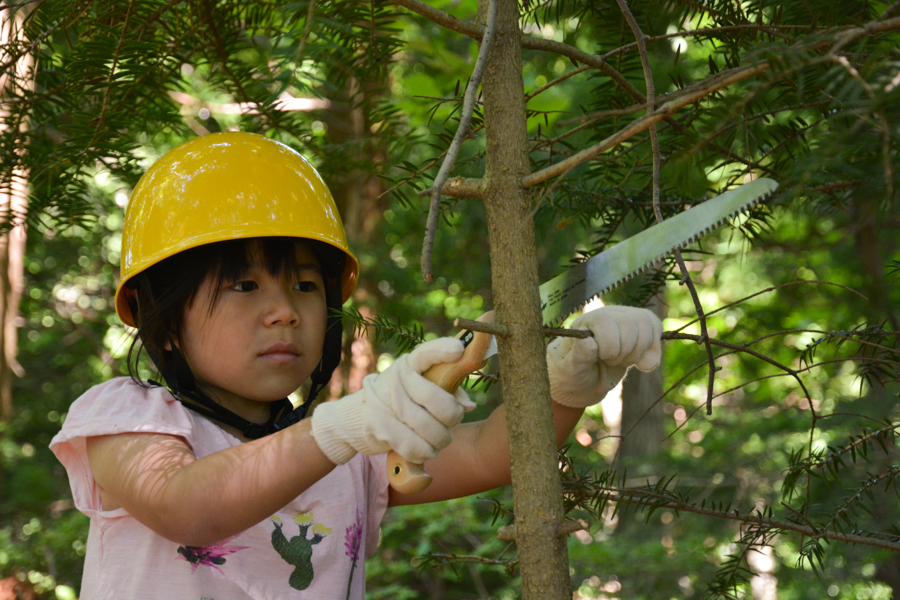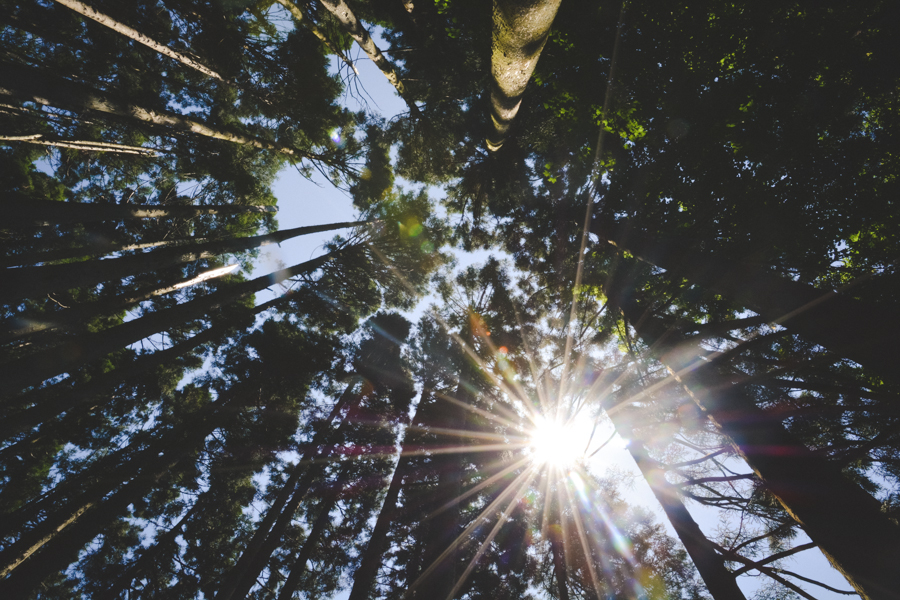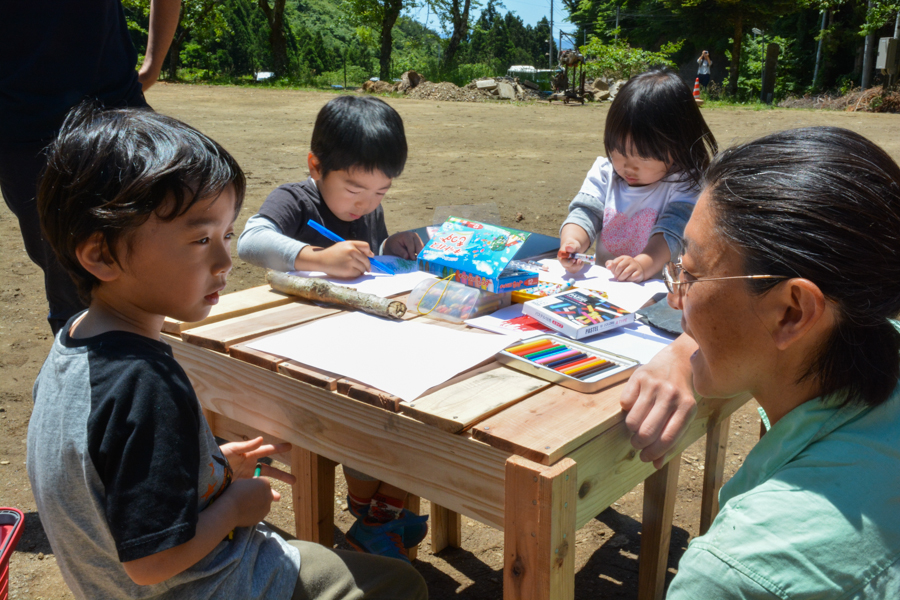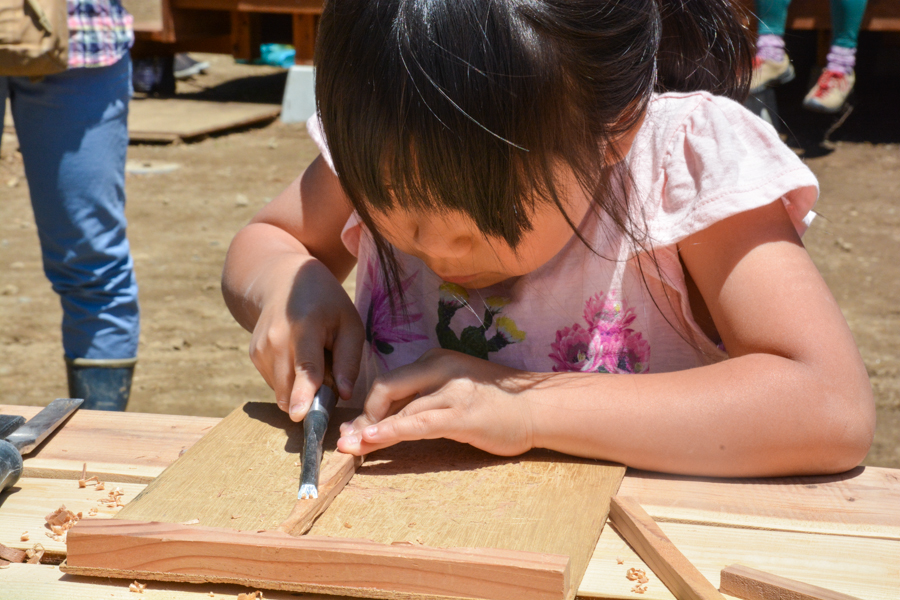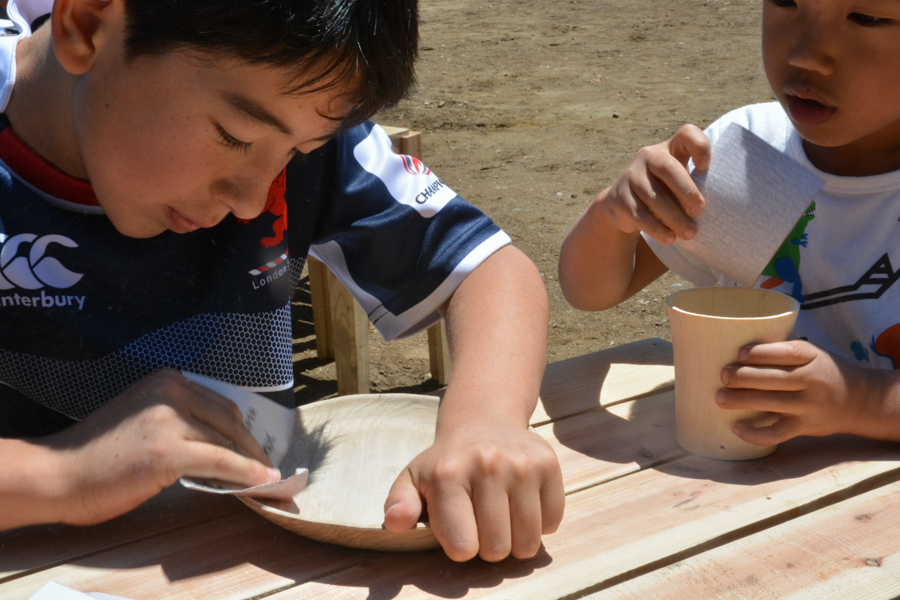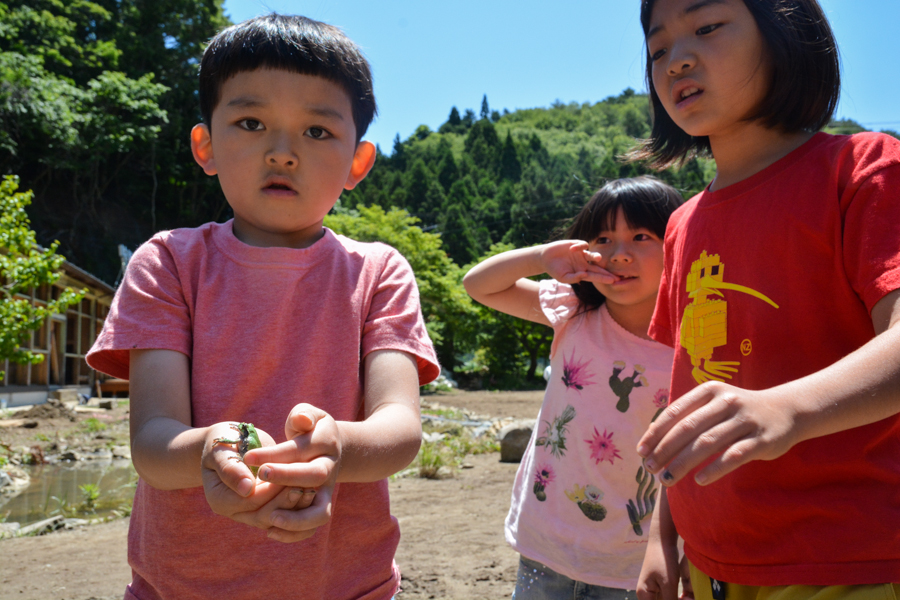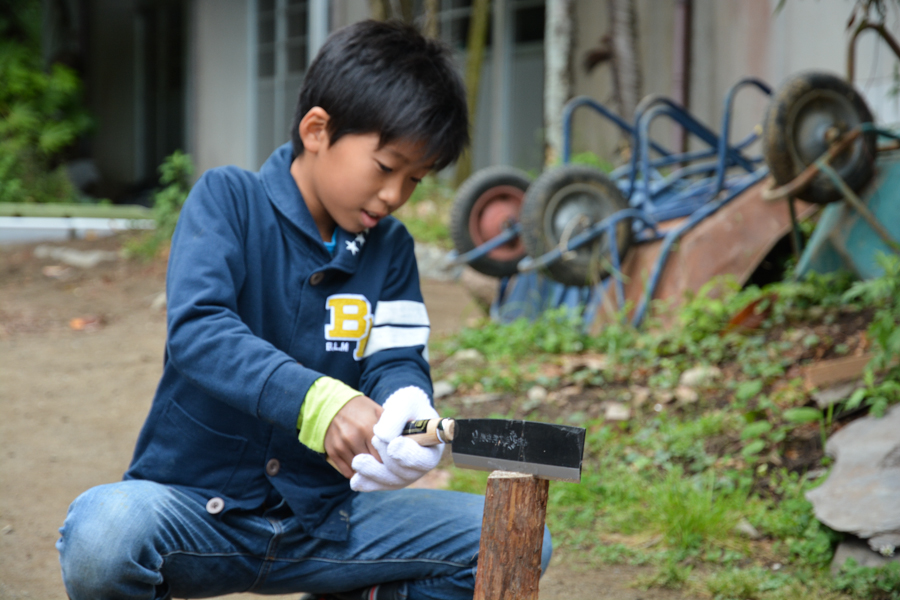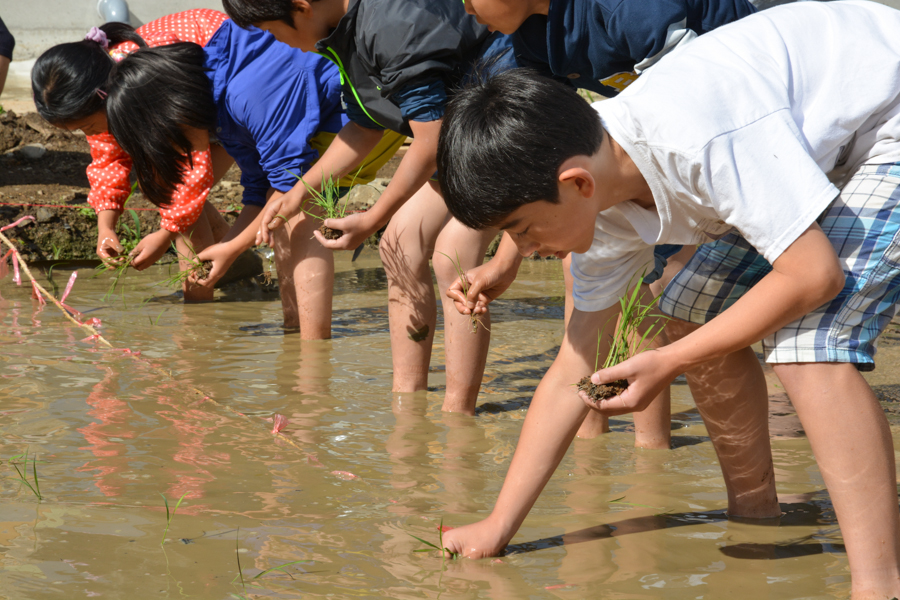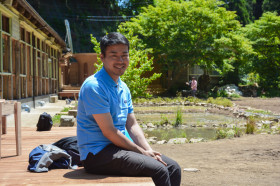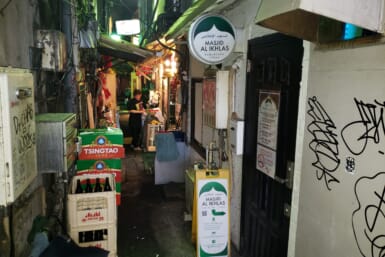The Moriumius Project that links sea, forest, and the memories of a Tohoku community.
Text and pictures by Natalie Jacobsen
Winding up a highway along the mountainous coast north of Sendai, lean cedars reach high overhead; the clear blue sea stirs far below. Peering over the guardrail, the sea looks calm and inviting, dotted with the occasional fishing boat. The valleys are covered in lush grass, thick with wildflowers. The summer breeze is gentle as the sun peeks through the tree branches; it takes a moment to realize the valleys are devoid of buildings because of the 21-foot tsunami that washed ashore just over four years ago. Life and land has almost entirely been returned to Mother Nature, nurtured and reborn. The area is serene, yet a shadow lingers over the region. Most who survived have left the area, seeking to grow elsewhere.
But Gentaro Yui hasn’t given up on Tohoku.
Yui talks about bringing trays and boxes of food from Tokyo to refugees at evacuation centers throughout Miyagi after the earthquake. “I love cooking; it’s something that I’m good at, and I wanted to help out, so I did that in a way I knew I could.” While making his rounds in Tohoku, he found one a few scattered “safe areas,” where families from the Ogatsu District of Ishinomaki escaped during the earthquake and tsunami of 3/11. There, on the ridge, 60 meters above the waves, in a grove of centuries-old forest, nestled an abandoned 92-year-old school.
The rustic building sits quietly, neither boastful nor flaunting; the cedar wood is lightly feathered with original sea-green paint chips from 1923. Yui saw in the old schoolhouse an opportunity to stay and to continue helping long after the emergency efforts had come to an end. He snatched up the property, and began investing all he had into the building and land.
Thus, Moriumius was born.
“Mori” represents the vast forest, carpeting the region.
The idea behind the project was to create a safe haven for those living in, around, and outside of the Miyagi area. It acts as a part-time school, part-time resort, and full-time learning experience. There are three sections of the main building: the lobby, the dining wing, and the dormitory for students. All furniture is handmade by a Hokkaido-based company. The upstairs room is designed to be a playroom filled with bookshelves. In the back there is an outdoor bathing area, complete with an onsen surrounded by a bamboo wall. Just outside of the kitchen is an old-fashioned stone oven.
In 2002, it stopped being used as a school and had been left to run down. Yui needed to refurbish and reinforce the place to get it back to functioning condition again. He said that the framework remained as strong as it has because the architects, 90 years ago, had been practiced in building ships: one trace of this is the high, vaulted ceiling that reminds one of a ship’s hull.
Throughout the day, the pitter-patter of feet can be heard echoing down the hardwood-floor hallways, with kids vaulting up the stairs and climbing the bunk beds. The long shadows and golden sunlight in the evening make it cozy.
Moriumius will be a place to learn essential survival skills. Yui wants to target and draw in residents living in cities who are accustomed to finding everything at their fingertips. “Teaching these lessons about where food comes from, how to grow it, and how to support one another will last a lifetime.”
He insists this shouldn’t be labeled as a reconstruction project, though; naturally, he hopes the local towns can be rebuilt as they once were. His focus remains on the future. “We are combining the old way of life with a new way of life.”
While many focus on the tsunami being a terrible event that forced so many to flee, he is embracing it as a catalyst that brought so many people together and spurred a much bigger plan. Yui considers this a moment, a window, to “revitalize [the area] and the culture, and focus on the community and the morale of those who have spent their years dedicated to this land.”
“Umi” is for the sea that stretches beyond the horizon
A group of visiting children run amok around the land, hollering initially like wild animals; the volunteers organizing the projects do not lecture, scold, or limit them. Instead, the children are handed saws to level trees, scrapers to make chopsticks, axes to cut firewood, gloves to pluck clams from the sea, knives to prepare their food, and matches to light their fires. The leaders shared, and invited the children to join the next activity. Within minutes, the children were fixated, and diligently working, taking in everything.
On the first day at Moriumius, the children were invited onto local fishermen’s boats to witness the process of catching seafood for dinner. They cracked open shells and sea squirts, and tasted scallops straight from the sea. Most faces expressed sheer delight. The fishermen’s faces lit up when the children bombarded them with questions.
“One of the most important and main points of the project is sustainability.” True, Moriumius is entirely self-supporting, but with a full-time and volunteer staff, it relies on students and visitors in order to continue. Yui claims he hasn’t “been to a grocery store in years”; while growing up in the Bay Area of California, he “was exposed to an organic lifestyle…restaurants all around the city were practicing composting and being green; these concepts are in my blood.” He intends to impart those same habits here.
All food is produced on-site. Water is heated via a stove that delivers heat through newly installed pipes. The firewood is cut by students in the forest daily. An irrigation system that was dug just outside the front of the building can sustain crops of rice. A few LED lights, customized by a Tokyo University architect, are poised like barn owls on beams, and the walls of glass provide light and warmth during the day.
Standing on the wide porch, you can see the sea in the distance, as kids run and play in the field in front of the school. Oftentimes the ocean is not raging at all; the sound of waves is masked by the hush of the wind rushing through the trees, but mostly, now, by the sounds of laughter. An underlying threat, a whisper, may linger, but slowly and surely, the scars from 3/11 are disappearing from the shoreline.
“Us” is for our future
Moriumius may be the brainchild of Yui, but it is a labor of love belonging to an ever-growing network of over 5,000 people.
“I crowd-funded through Shooting Star for twelve months—I traveled as far as NYC to meet with clients who were donating for the sake of supporting a cause. Six months into the venture, we held a workshop here and invited graduate students from Harvard, Stanford, Mexico and Greece…for a week they created a blueprint [of the school’s layout], and made a business model.
“The people of Sendai suffered beyond our scope of comprehension, yes…but they were also able to pick themselves up quickly. Friends of farmers and farming families could continue to eat well [just after the disaster], because they’d been taught to rely on themselves and the land. If, or when, there is a similar disaster in Tokyo, the conbinis and grocery stores will be barren, maybe for weeks.” Tokyo may be far from Sendai, but he is not far off—Tokyoites can probably recall stores’ empty shelves in the weeks following 3/11.
“Some of the professionals in the area…teaching fishing, rice planting… they lost everything [on 3/11]. They don’t speak of it, but it has a presence.” Indeed, while most of the children were too young to remember the disaster—some hadn’t even been born yet—the locals of Ogatsu had their spirits and morale boosted, if just momentarily.
During the summer, Moriumius will offer weeklong and weekend-long programs for children. They hope to support between 20 and 30 students a week, and have about ten staff members on hand at all times. There is multi-lingual support available. The cost of the program will include board, transportation from Sendai Station, food, work gear, craft supplies, and professionally assisted activities.
If you can’t make it in summer, there is another option: Moriumius will stay open year-round and act as a resort for families and visitors to stay at anytime they’d like. Volunteers and professionals are also welcomed to reach out. Yui and his team are open to any and all forms of help—be it time, ideas, or your own presence and willingness to help out.
Registration and reservations can be made through their website, www.moriumius.jp. Moriumius officially opens its doors on July 18th. There is still some work left to do, but Yui seems content, knowing the hardest parts are over.
“This one school represents the elements of life.” If ‘Life Is a Play,’ as the location’s motto says, this is certainly just the first act for Moriumius, and Yui is hopeful about the longevity of the his endeavor.
“It has been a life-changing project for me and those involved, and I hope in the next 90 years, someone else will bring their vision and turn it into something new, again.”

